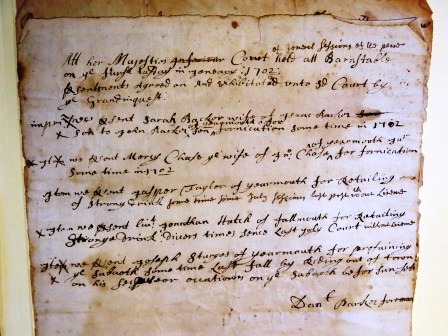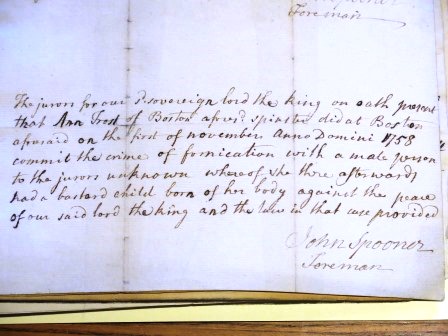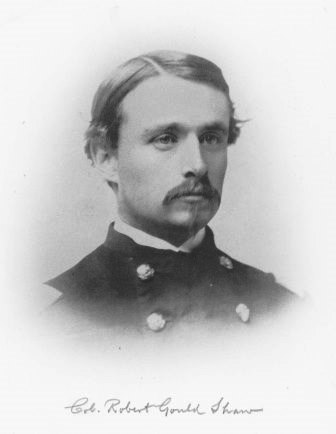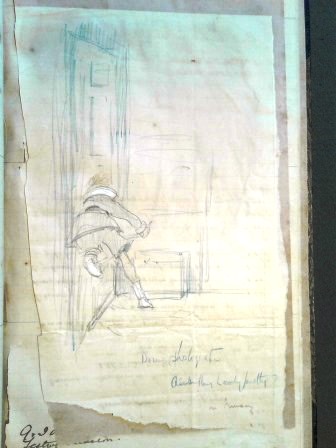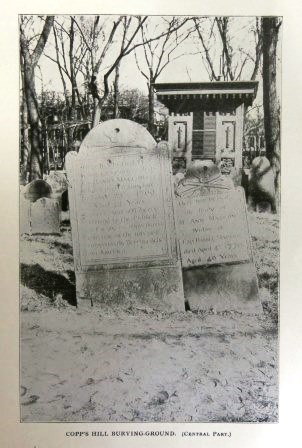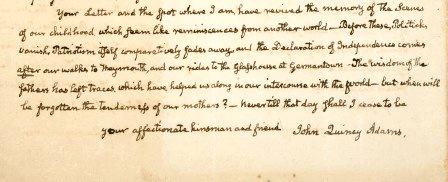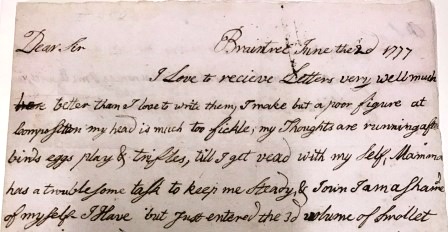By Rakashi Chand, Reader Services
October is Archives Month, and to celebrate our wonderful archivists, we would like to introduce them to you! Every day the very talented and skilled archivists of the MHS work tirelessly behind the scenes to ensure that theSociety’s collections are safe, properly preserved, well-organized, and accessible for use today and for future generations.
To introduce them to you, we asked our archivists a few fun questions, and here are their answers:
Collection Services:
Katherine H. Griffin, Nora Saltonstall Preservation Librarian
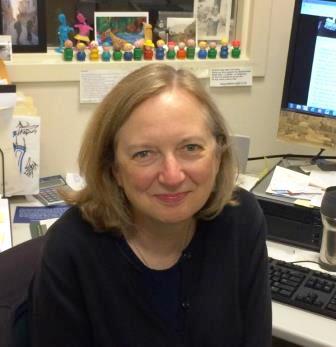
What is your favorite collection or your favorite item in the collection?
Kathy: William Sturgis papers.
Why did you become an Archivist?
Kathy: I was in a “public history” master’s degree program at Northeastern University, thinking I wanted to work in museums, and I had an adjunct professor from the MHS. We had a tour of the MHS for one of the classes, and I was completely captivated by manuscripts and paper conservation.
Several years later, a position came open at the MHS and Anne Bentley called me and told me to apply, which I did, and Voila!
What is a fun fact about you?
Kathy: I never wanted to live in a city, but now it’s hard to imagine living anywhere else.
*****
Peter Steinberg, Digital Projects Production Specialist
What is your favorite collection or your favorite item in the collection?
Peter: The Wilder Dwight letter he wrote as he lay dying.
Why did you become an Archivist?
Peter: For the benefits.
What is a fun fact about you?
Peter: I like All Bran.
*****
Reader Services:
Alexandra Bush, Library Assistant

What is your favorite collection or your favorite item in the collection?
Alex: It’s hard to choose a favorite, but one item from our collections that I really love is Christopher P. Cranch’s 1839 journal (part of the Christopher P. Cranch papers). It includes some great cartoons and rough doodles representing Cranch’s interest in the Transcendentalist movement. Perhaps the most noteworthy of these is an early sketch of Cranch’s famous “transparent eyeball” cartoon, which is based on a passage from Emerson’s Nature. (Here’s a link to the digitized version of the journal -> http://www.masshist.org/database/viewer.php?item_id=3279&mode=large&img_step=12#page12)
Why did you become an Archivist?
Alex: I chose to become an archivist because I wanted an outlet for my love of history that allowed me to do my own research as well as help other people who also love history. I’m also really into organizing things!
What is a fun fact about you?
Alex: I’m an aspiring artist and also a dweeb who secretly loves video games.
Favorite archival tool?
Alex: The microspatula!
*****
Brendan Kieran, Library Assistant
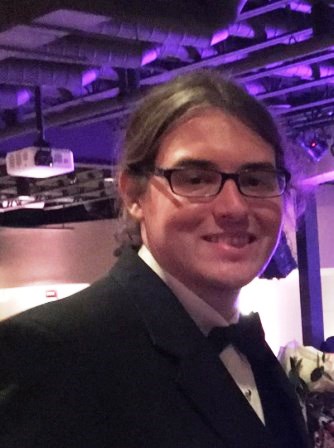
What is your favorite collection or your favorite item in the collection?
Brendan: One item I enjoyed working with, and writing about, this year is the volume of Cigar Factory Tobacco Strippers’ Union records, 1899-1904, that is included in the Society’s collection of Boston Central Labor Union (Mass.) records. It was exciting to read about some ways in which women in Boston organized and responded to their working conditions during that period. Eventually, I’d like to look through other items in this collection and learn more about union activities in late 19th– and early 20th-century Boston.
Why did you become an Archivist?
Brendan: I gained my initial exposure to the field as an archives volunteer during my junior year of college. After I graduated, I sought out more opportunities in libraries and archives, and, as I gained more experience, I came to the conclusion that this was what I wanted to do long-term. Now I’m in library school, and I’m definitely happy that I chose this field!
What is a fun fact about you?
Brendan: My go-to fun fact is that I’m an identical twin!
*****
Erin Weinman, Library Assistant
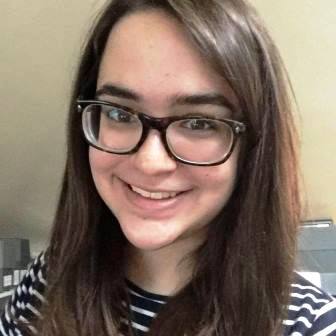
What is your favorite collection or your favorite item in the collection?
Erin: It is really hard to pick just one item, but I absolutely love our collection of Powder Horns from the American Revolution. The designs on the horns are so interesting to look at and make each one very unique. They always give such a unique perspective on the soldiers who fought during the war. They also show who can and cannot draw, which I think we can all relate to today!
Why did you become an Archivist?
Erin: I absolutely love history, and I was very active in gaining experience in museums and archives growing up. I was introduced to public history in college which put a lot of emphasis on the importance archives had in the field. I knew right away that I wanted to be the person who assisted researchers in gaining access to archival records, create exhibits, and educate future historians. It has been very rewarding to work first-hand with materials and provide reference to such a diverse group of researchers. To me, there is nothing more important than having full access to our historical past!
What is a fun fact about you?
Erin: It is my goal to visit all of the National Parks in our country! I have been slowly making my way through the parks in the North East, but there are over 450 to visit!
*****
Dan Hinchen, Reference Librarian
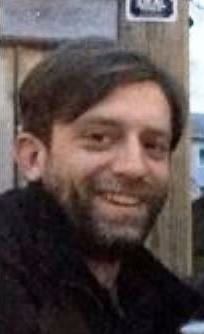
What is your favorite collection or your favorite item in the collection?
Dan: I can’t say that I have a single favorite. Usually, it is whatever collection/item I am currently working with. Recently, while working on a reference question, I did some digging through a small collection of Smith family papers. Included are some logbooks and account books kept by Capt. William Smith – apparently, the first ship captain to pilot a U. S. ship to Siam (Thailand), in 1818. Inside the volumes are several pencil drawings of various vessels, including a couple that depict the U. S. S. Constitution engaged in battle with the H. M. S. Gurriere, an event that was part of the War of 1812.
Why did you become an Archivist?
Dan: After college I was working a few part-time jobs and not pursuing a career in biology. Library school is something that was suggested by a couple of people near and dear to me, and I liked the sound of working in archives as a profession. Ten years later and here I am!
What is a fun fact about you?
Dan: In the summertime I have a second life, my weekends lived in the kitchen of a small clam shack on Cape Cod. Fry or die!
*****
Now that you have had the chance to meet some of our archivists, come visit the MHS to meet more of our fascinating staff. We welcome questions about the MHS collections as well as the archival profession, and would be happy to tell you more! Email us at Library@masshist.org or call us with any questions at 617-646-0532.
Happy Archives Month from all of us at the MHS!


